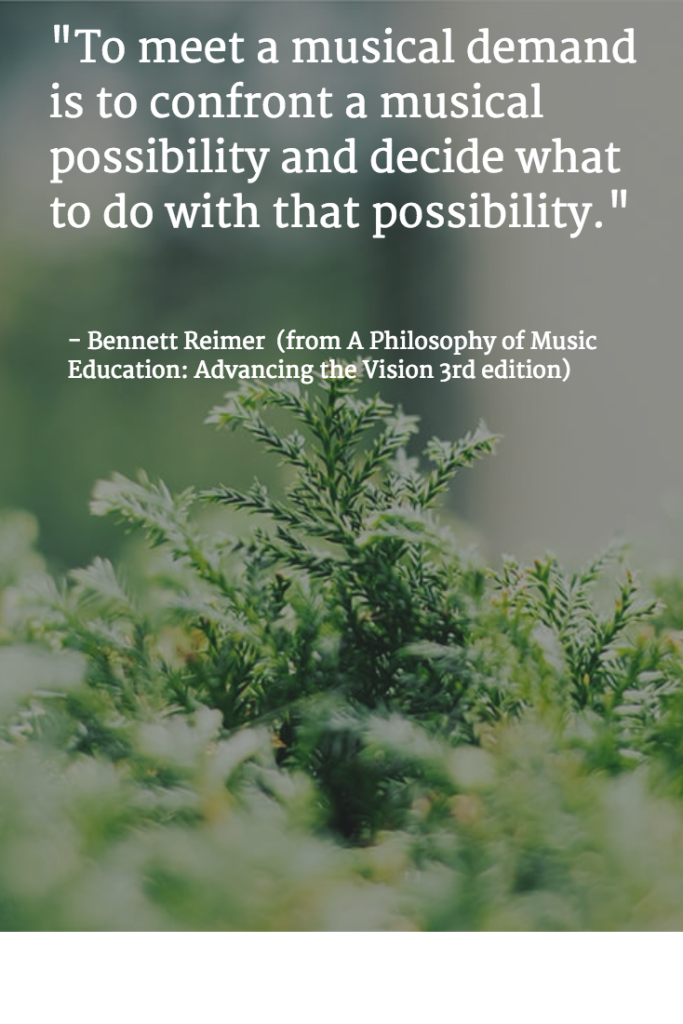When it comes to helping kids meet musical demands or challenges, parents and teachers often go straight to telling the child what to do to improve or play music correctly. While this is efficient, it’s not necessarily the most productive way forward.
This is particularly the case when it comes to helping children be musically imaginative and creative. How might we provide children opportunities to encounter musical possibilities and make musical decisions about those possibilities?
Books such as Teaching For Musical Understanding or Dimensions of Musical Learning and Teaching: A Different Kind of Classroom are helpful for developing strategies to support young people exploring musical possibilities rather than focusing on one “right” answer.
As music education philosopher Bennett Reimer suggests, “To meet a musical demand is to confront a musical possibility and decide what to do with that possibility” (From A Philosophy of Music Education: Advancing the Vision 3rd edition).
Are we providing young people opportunities to decide what to do with musical possibilities?
In other words, consider how we can give children space to explore the many musical possibilities available when engaging with music. This may mean asking them questions before telling them how to perform something correctly or making a suggestion about how it might sound better.
There is always time to help young people improve their accuracy or technique, but let’s not deny them opportunities to develop as creative people who when encountering musical demands, can imagine possibilities and make musical decisions.
